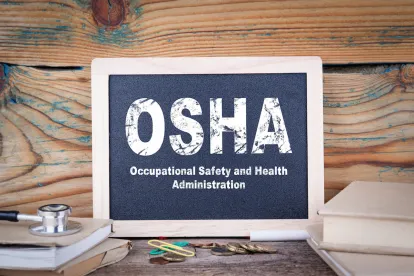On May 19, 2020, the U.S. Department of Labor’s Occupational Safety and Health Administration (OSHA) issued revised Enforcement Guidance for recording cases of COVID-19, which is a recordable illness under OSHA’s recordkeeping requirements.
Beginning May 26, 2020, employers are required to record cases of COVID-19, if the following three circumstances are present:
-
The case is a confirmed case of COVID-19, as defined by the Centers for Disease Control and Prevention.
-
The case is work-related as defined by 29 C.F.R. § 1904.5. An injury or illness is considered to be work-related if an event or exposure in the workplace either caused or contributed to the condition or significantly aggravated a preexisting injury or illness. Generally, work-relatedness is presumed for such injuries unless one of the nine exceptions listed in 29 C.F.R. § 1904.5(b)(2) specifically applies. In recognition of the difficulty of determining work-relatedness, OSHA is exercising enforcement discretion in determining work-relatedness in the context of employee COVID-19 illness.
-
The case involves one or more of the general recording criteria set forth in 29 C.F.R. § 1904.7. Under section 1904.7, injury or illness is considered to meet the general recording criteria, and is therefore recordable, if the injury or illness results in death, days away from work, restricted work or transfer to another job, medical treatment beyond first aid or loss of consciousness. Significant injuries or illnesses diagnosed by a physician or other licensed health care professional also are considered to meet the general recording criteria and are recordable, even if the significant injury or illness does not result in one of the listed conditions.
The guidance reiterates that the recording of a COVID-19 case does not in and of itself mean that an employer has violated an OSHA standard. Additionally, employers with 10 or fewer employees and employers in certain low-hazard industries need only report work-related COVID-19 illnesses that result in a fatality or an employee’s in-patient hospitalization, an amputation or the loss of an eye.
Whether or not a COVID-19 case is work-related or reportable, employers should continue their efforts to minimize the risk of transmission of the disease in the workplace through proper hygiene, social distancing and personal protective equipment.




 />i
/>i

